| New York
Architecture Images- Central Park Loeb Boathouse and the Lake |
|
|
location |
Central Park Lake on East Drive |
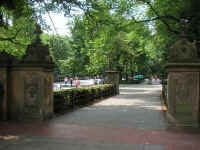 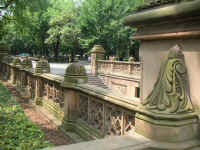 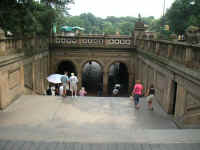 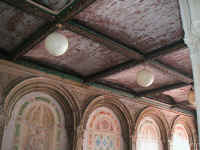 |
|
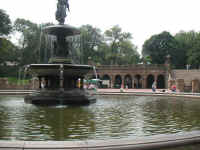 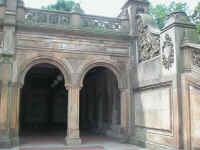 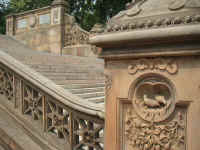 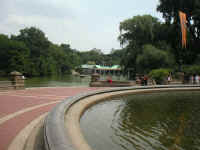 |
|
|
Bethesda Terrace
Sculptor: Emma Stebbins (1815-1882) In their 1858 Greensward Plan, Frederick Law Olmsted and Calvert Vaux called the architectural heart of the Park "The Water Terrace," for its placement beside the Lake and the grand fountain in the center. Once the Angel of the Waters fountain was unveiled in 1873, however, the area became forever known as Bethesda Terrace. At the dedication, the artist's brochure quoted the Biblical verse from the Gospel of St. John 5:2-4: "Now there is at Jerusalem by the sheep market a pool, which is called Bethesda whoever then first after the troubling of the waters stepped in was made whole of whatsoever disease he had." The artist likened the healing powers of the angel to that of the clean and pure Croton water, delicately cascading down the fountain, that brought health to the people of New York City. The lily in her hand represents purity while the four figures below represent Peace, Health, Purity, and Temperance. |
|
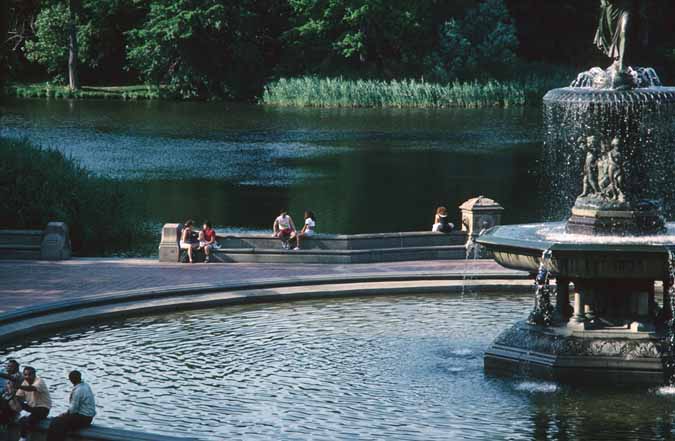
|
|
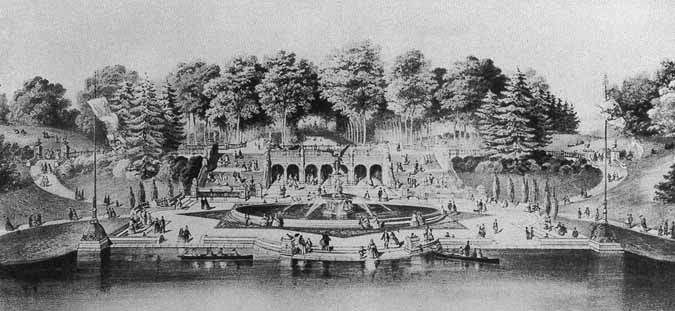
|
|
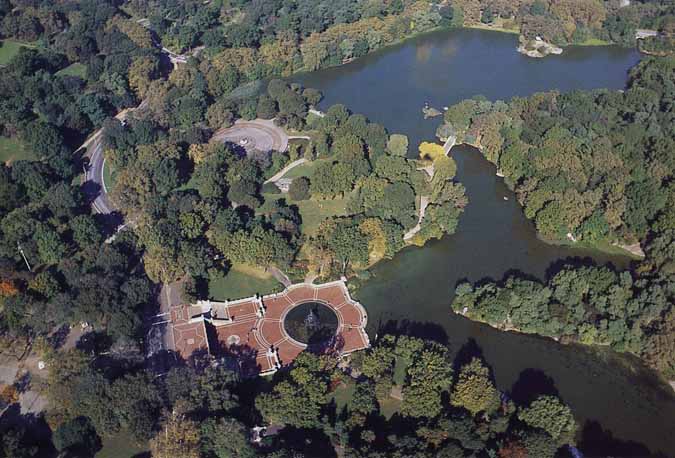
|
|
|
Loeb Boathouse
With their 1858 landscaping plan under construction, Frederick Law Olmsted and Calvert Vaux began adding architectural features to their Park design. Around 1874, Vaux designed a two-story boathouse at the eastern end of the Lake. Here visitors could purchase refreshments, take boat rides, and watch other boats. After this wooden Victorian structure with sloping mansard roof burned down, the current Loeb Boathouse took its place in the 1950s. Today at the Boathouse visitors can enjoy a meal in any season, with overhead heating helping to extend as long as possible the pleasure of dining on the deck overlooking the Lake. More informal snacks are available on the outside terrace across from the bicycle rental concession. At Loeb you can also rent rowboats or take a ride in an authentic Venetian gondola. This is more than a ride, it is an "event" – with luck, your gondolier might just break into song at some point in the trip. To the west of the Boathouse entrance, at the entrance to the Ramble, is a small, wire-fenced area where the Conservancy along with volunteers is experimenting with growing wildflowers that attract butterflies. To date, 26 species of butterfly have been spotted. July and August are the best times to butterfly watch. Visitors also come to the Boathouse to record their observations of birds and other Park wildlife in the "Bird Register." This unprepossessing 2-inch loose-leaf notebook kept in the Boathouse documents the incredible compendium of wildlife in the Park. Birders record birds seen or heard or document a small wildlife drama witnessed in one of the Park's landscapes. Most Central Park birders make entries – in fact there is at least one entry for every day in 1998. On December 12, 1998, former President Jimmy Carter and his wife Rosalyn wrote, "Enjoyed [the book] Red-Tails in Love – we've been birdwatchers for the past 10 years in about 15 nations and in a number of states. Glad to know the red-tails were seen yesterday. Have about 750 birds on our list. Hope to come back to Central Park and will." Birding aficionados report that 750 birds is an exceptional amount! Some entries provide surprising information to birders. For example, the sighting of two snow geese at the Harlem Meer is rare in this area. And a growing number and variety of red-headed woodpeckers are being spotted on the west side of the Great Lawn. Some birds inspire nicknames – such as L.E.O., the long eared owl that has returned the last four years to a Norway spruce at Cedar Hill, and Pale Male of Marie Winn's Red-Tails in Love. Visitors should feel free to enter their observations and be part of this Central Park tradition. |
|
|
images |
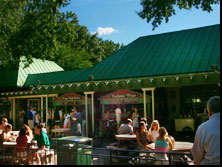
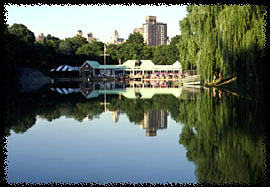
|
|
The Lake At the heart of Central Park
is the Lake. Created out of a large swamp, the 22-acre Lake was intended
to provide boating in the summer and ice-skating in the winter. Opened
for skating in 1858 at a time when the winters were |
|
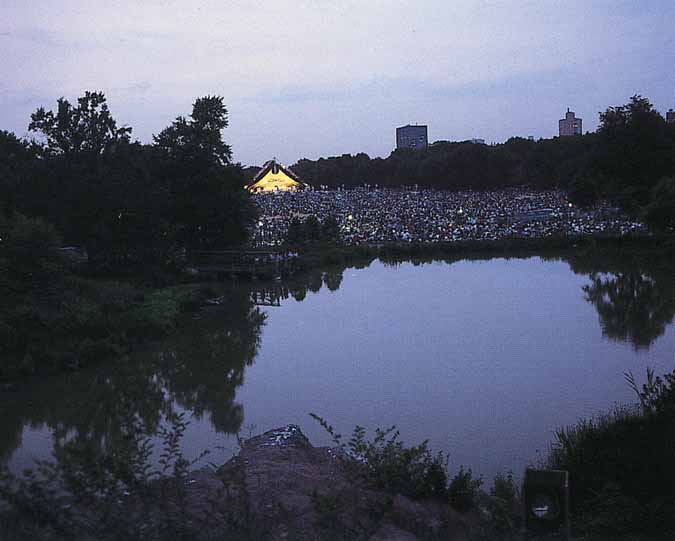 |
|
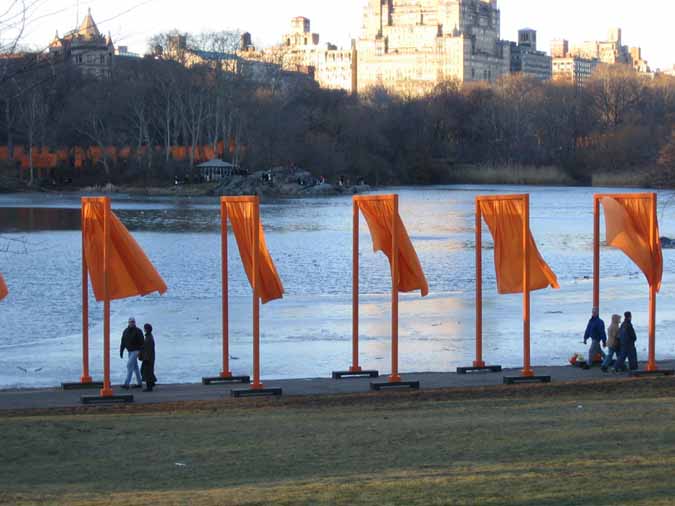 |
|
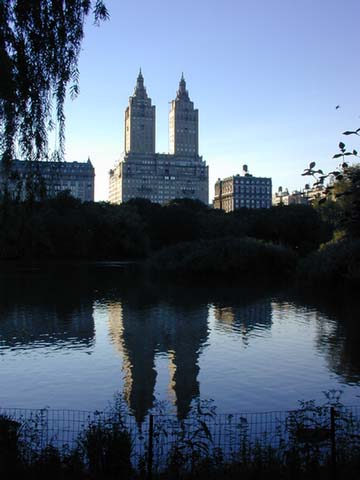 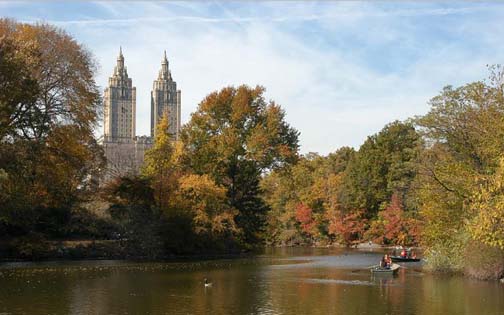 |
|
|
links |
thanks to www.centralpark2000.com & www.centralparknyc.org |